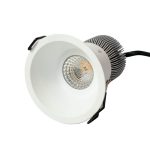Demystifying LED Light Strips: How Do They Work and Transform Your Space?
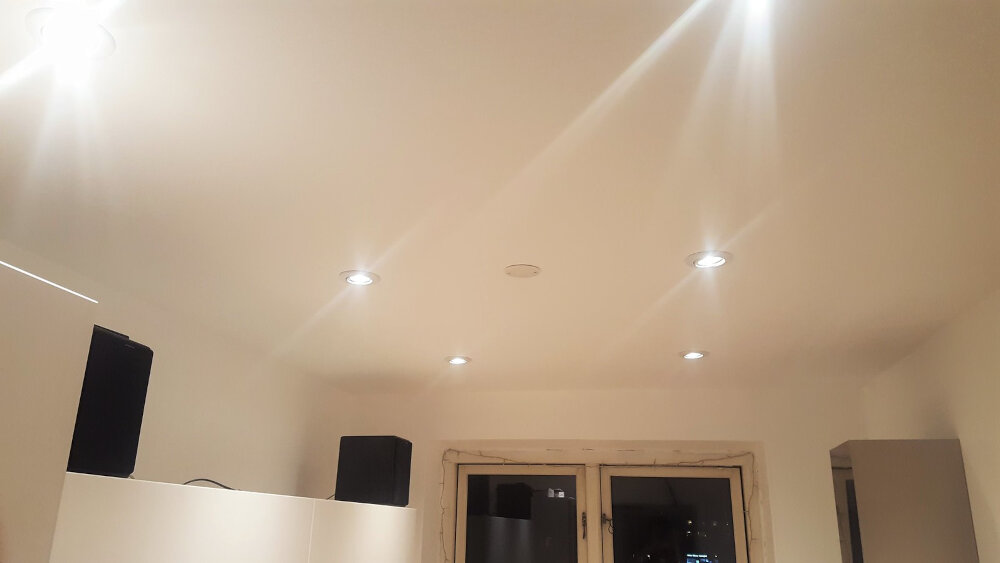
LED light strips have become increasingly popular in recent years, transforming the way people illuminate their homes and workspaces. These strips offer an effective and affordable way to enhance the ambiance of any environment, from creating a warm and cozy atmosphere in the living room to adding a futuristic touch to a gaming setup. However, despite their widespread use, the technology behind LED light strips can still seem mysterious to many people. In this article, we will demystify LED light strips, exploring how they work and the ways in which they can transform your space. At their core, LED light strips are composed of small light-emitting diodes that are connected in series to create a continuous chain of lights. These diodes emit a bright, energy-efficient light that is ideal for illuminating any space. LED light strips come in a variety of shapes and sizes, with some being flexible and able to bend around corners or wrap around objects. They can be easily installed using adhesive backing or mounting clips, making them a versatile lighting option for any room. Whether you are looking to create a cozy reading nook or add some flair to your home office, LED light strips offer endless possibilities for transforming your space.
LED light strips are a versatile lighting solution that can transform any space with ease. These strips consist of a series of small LED lights that are attached to a flexible circuit board. They are typically powered by a low voltage power supply and can be cut to fit any length or shape needed for your project. LED light strips come in a variety of colors and brightness levels, making them an ideal choice for creating mood lighting or accenting specific areas of a room. They are also energy-efficient and have a long lifespan, making them an environmentally-friendly choice for your lighting needs. Whether you’re looking to add some extra ambiance to your living room or illuminate your kitchen countertops, LED light strips are a cost-effective and easy-to-install solution that will add style and functionality to your space.
LED light strips have emerged as a popular lighting solution in recent years, but their history dates back to the early 1960s when the first LED was invented. However, it wasn’t until the 1990s that LED technology advanced enough to allow for the production of efficient, high-brightness LED light strips. These early strips were primarily used in commercial and industrial applications, such as backlighting for displays and signage. As LED technology continued to improve and become more affordable, the use of LED light strips expanded to residential and decorative applications, allowing people to transform their spaces with customizable and energy-efficient lighting. Today, LED light strips can be found in a wide variety of settings, from homes and businesses to entertainment venues and public spaces.
How do LED light strips work?
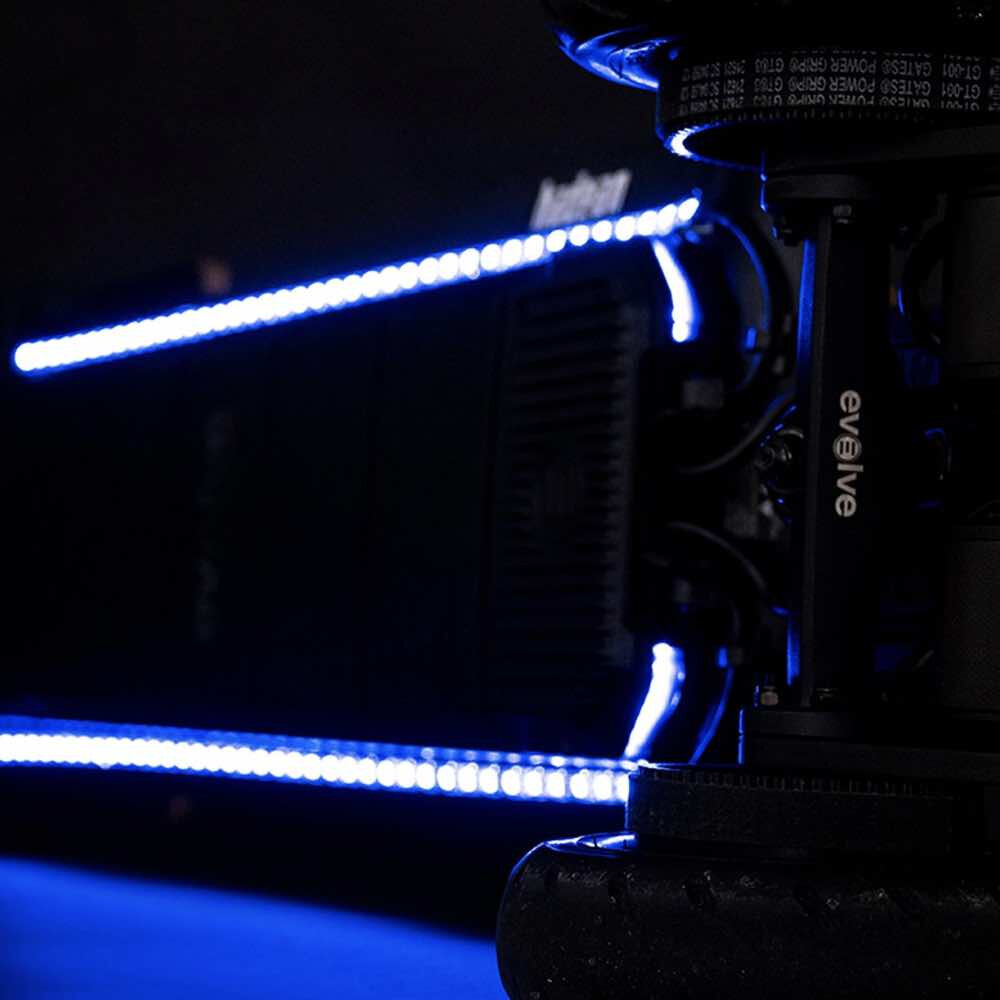
LED light strips are a popular and versatile lighting solution used in a variety of applications, from accent lighting in homes to decorative lighting in commercial spaces. But how do they actually work? LED stands for Light Emitting Diode, which is a semiconductor device that emits light when an electric current is passed through it. Unlike traditional incandescent bulbs, which produce light by heating a filament, LED light strips produce light through a process called electroluminescence. When an electric current is applied to the LED, electrons inside the semiconductor material become excited and release energy in the form of light. LED light strips come in a variety of colors and can be dimmed or brightened to suit the desired ambiance. They are also energy-efficient, durable, and long-lasting, making them a popular choice for those looking to reduce their carbon footprint and save on electricity bills. LED light strips are made up of several components, including the LED chips, the circuit board, and the protective covering. The LED chips are the actual light-emitting diodes that produce light when an electric current is applied. The circuit board is responsible for controlling the flow of electricity through the LED chips and determining the color and brightness of the light emitted. The protective covering helps to protect the LED chips and circuit board from damage and also diffuses the light to create a more even and aesthetically pleasing glow. LED light strips are incredibly versatile and can be cut to fit any length or shape, making them easy to install and customize to fit any space. With their energy efficiency, durability, and flexibility, LED light strips are the perfect lighting solution for anyone looking to transform their space with a modern and stylish touch.
LED technology is a revolutionary innovation in the world of lighting. LED stands for \light-emitting diode,\ which is a semiconductor device that emits light when an electric current passes through it. Unlike traditional incandescent bulbs, LED lights don’t rely on a filament to produce light, which means they consume far less energy and last much longer. LED light strips are made up of numerous individual LEDs that are connected together and can be controlled to create a variety of lighting effects. They are highly versatile and can be used in a wide range of settings, from accent lighting in homes to signage and displays in commercial settings. Additionally, LED light strips are available in a variety of colors and can be easily programmed to change colors or brightness levels, making them an ideal choice for creating customized lighting schemes.
Light-emitting diodes (LEDs) produce light through a process called electroluminescence, which involves the conversion of electrical energy into light. When an electric current is applied to an LED, the energy causes electrons to move from the negative side of the diode to the positive side. As they move, they release energy in the form of photons, which are particles of light. The type of material used in the LED determines the color of the light produced. LEDs are highly efficient, durable and long-lasting compared to traditional incandescent bulbs, making them a popular choice for lighting applications in both commercial and residential settings.
LED light strips are assembled by first selecting the appropriate LED chips and attaching them to a flexible circuit board using soldering techniques. The circuit board is then coated with a layer of silicone to protect the LEDs from damage and to provide waterproofing. Next, the LEDs are wired together in series or parallel, depending on the desired voltage and brightness of the strip. To control the LEDs, a driver circuit is added to convert the incoming power supply to the correct voltage and current for the LEDs. Finally, the strip is enclosed in a protective housing and connected to a power source, allowing the LEDs to emit their vibrant and energy-efficient light.
Types of LED light strips
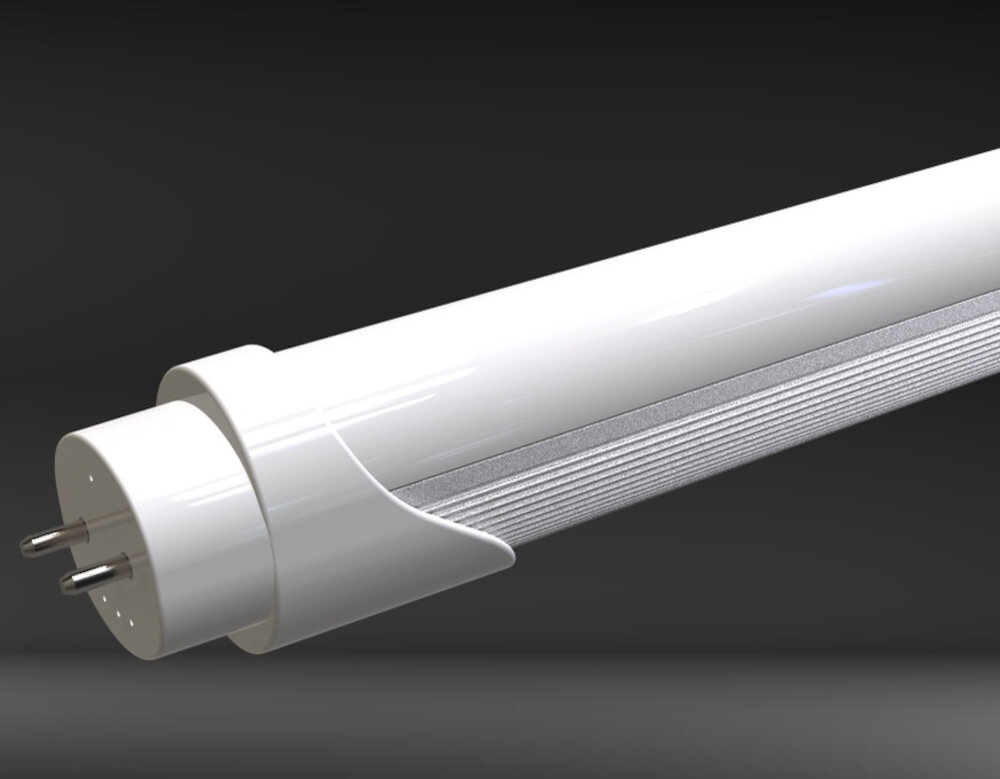
LED light strips have become increasingly popular due to their versatility and energy efficiency. There are various types of LED light strips available in the market, each designed for different purposes. The most common types include RGB, white, and color temperature adjustable LED light strips. RGB LED light strips are capable of producing a wide range of colors, allowing you to create dynamic lighting effects. These strips typically come with a remote controller that lets you switch between colors and adjust their brightness. They are perfect for adding a pop of color to any space, whether it’s for accent lighting or decoration. White LED light strips, on the other hand, produce a single color temperature of white light. They are typically available in warm white or cool white, each offering a different ambiance to a room. Warm white LED light strips create a cozy and welcoming atmosphere, while cool white LED light strips offer a more clinical and modern feel. Color temperature adjustable LED light strips are designed to provide the best of both worlds. They allow you to adjust the color temperature of the light, from warm to cool, giving you the flexibility to create the perfect ambiance for any occasion. These strips are ideal for use in spaces that require different lighting depending on the time of day or the activity being performed.
LED light strips come in a variety of colors and types. Single-color LED light strips are the most basic form of LED lighting that emit a single color of light, such as white, red, blue, or green. These light strips are ideal for simple and straightforward lighting needs. Multicolor LED light strips are a more advanced form of LED lighting that can emit various colors of light from a single strip. These light strips are ideal for creating a dynamic and colorful ambiance in any room. RGB LED light strips are the most advanced type of LED lighting that can emit any color of light by mixing red, green, and blue LED chips. These light strips are ideal for creating a customizable lighting experience, allowing users to adjust the color and brightness to suit their mood and preference.
LED light strips are a versatile lighting solution that can transform any space with ease. There are various types of LED light strips, and their differences lie in their brightness, color temperature, and flexibility. RGB strips are ideal for creating colorful and vibrant lighting displays, while white strips are better suited for task lighting and providing a more natural light. There are also dimmable strips that allow you to adjust the brightness to your liking. Additionally, some strips are waterproof and can be used in outdoor settings, while others are designed for indoor use only. The flexibility of the strip is another factor to consider, with some strips being more rigid and others being more pliable, allowing for more versatile installation options. Ultimately, the type of LED light strip you choose will depend on the specific lighting needs of your space.
LED light strips are versatile and can be used in a variety of settings. For instance, color-changing LED light strips are perfect for creating a festive atmosphere for parties, weddings, or any other special occasions. They can also be used for accent lighting in bedrooms or living rooms, creating a cozy and warm ambiance. Single-color LED light strips, on the other hand, are suitable for task lighting in the kitchen or home office, providing bright, focused light for cooking, reading or working. Additionally, waterproof LED light strips are ideal for outdoor use, such as lighting up a patio or garden, and can withstand exposure to rain or snow. LED light strips are also commonly used in retail settings to highlight products or create an inviting atmosphere for customers. Overall, LED light strips are a versatile and energy-efficient lighting solution that can be used in a variety of settings to transform any space.
Factors to consider when choosing LED light strips
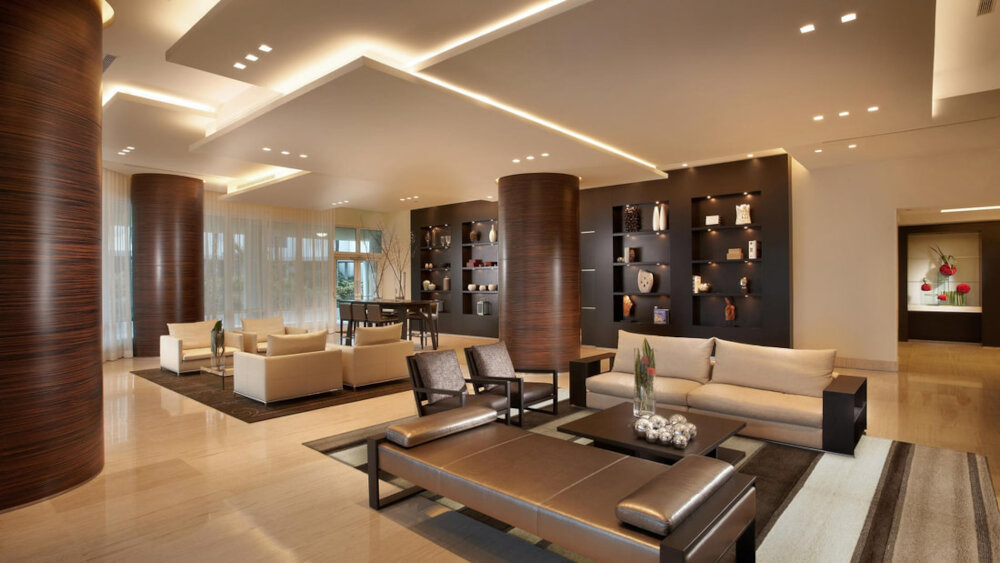
When it comes to choosing LED light strips, there are several factors that you need to consider to ensure that you get the right product for your needs. The first thing to consider is the color temperature of the LED strips, which refers to the warmth or coolness of the light produced. Warm white light, which has a yellowish hue, is ideal for creating a cozy and relaxing environment, while cool white light, which has a bluish tint, is perfect for creating a bright and vibrant atmosphere. It’s important to choose the right color temperature based on the mood and ambiance that you want to create in your space. Another factor to consider when choosing LED light strips is the brightness level. LED light strips come in different brightness levels, measured in lumens. A higher lumen rating means a brighter light output, while a lower rating means a dimmer light output. It’s important to choose the right brightness level based on the purpose of the lighting. For example, if you’re using the LED light strips for task lighting, such as in a kitchen or office, you’ll want a brighter light output. On the other hand, if you’re using the LED light strips for ambiance, such as in a bedroom or living room, a dimmer light output may be more appropriate.
When it comes to LED light strips, brightness is an important factor to consider. Brightness is measured in lumens, which refers to the amount of light emitted by the LED strip. The higher the number of lumens, the brighter the strip will be. It’s important to choose the right level of brightness for your space, as too much can be overwhelming and too little can be ineffective. Additionally, considering the color temperature of the light can also impact the perceived brightness. For example, a cool white light may appear brighter than a warm white light with the same number of lumens. Overall, understanding brightness and lumens can help you create the perfect ambiance for your space with LED light strips.
Color temperature is a crucial aspect of LED light strips that determines the warmth or coolness of the light emitted. It is measured in Kelvin (K) and ranges from 1,000K to 10,000K. Lower color temperatures (1,000K to 3,000K) emit warm, yellowish light that creates a cozy and inviting atmosphere, perfect for living spaces. On the other hand, higher color temperatures (4,000K to 6,000K) emit cooler, bluish light that creates a bright and crisp ambiance, ideal for workspaces and kitchens. It is important to consider the color temperature of LED light strips to achieve the desired mood and functionality in a space.
CRI, or Color Rendering Index, is a metric that measures how accurately a light source renders colors compared to natural light. This is an important consideration when choosing LED light strips for your space, as a low CRI can make colors appear dull or distorted. A CRI of 80 or above is generally considered good, while a CRI of 90 or above is excellent. LED light strips with high CRI values are ideal for spaces where color accuracy is important, such as art studios, makeup rooms, and photography studios. By choosing LED light strips with a high CRI, you can ensure that your space is illuminated with vibrant, true-to-life colors.
When it comes to LED light strips, one important aspect to consider is the IP rating, which stands for Ingress Protection. This rating system is used to determine how well the LED strip is protected against the intrusion of water and dust. The IP rating is typically a two-digit number, with the first digit referring to the level of protection against solid objects and the second digit referring to the level of protection against liquids. For example, an LED strip with an IP65 rating means that it is dust-tight and protected against water jets from any direction. Meanwhile, an LED strip with an IP68 rating is completely dust-tight and can be submerged in water up to a certain depth for an extended period of time. Understanding the IP rating of an LED light strip is crucial in ensuring that it is suitable for the intended use and environment.
LED light strips come in a variety of lengths and sizes, making them incredibly versatile for a range of lighting needs. They can be as short as 5 inches or as long as 65 feet, allowing you to customize the lighting in any space. The width of LED light strips can also vary, typically ranging from 8mm to 12mm, with smaller widths providing greater flexibility for tight spaces. Additionally, LED light strips can be cut to specific lengths, allowing for even greater customization. Whether you’re looking to add a subtle accent to a room or create a bold statement, the length and size options of LED light strips make them a perfect choice for any lighting project.
How to install and control LED light strips
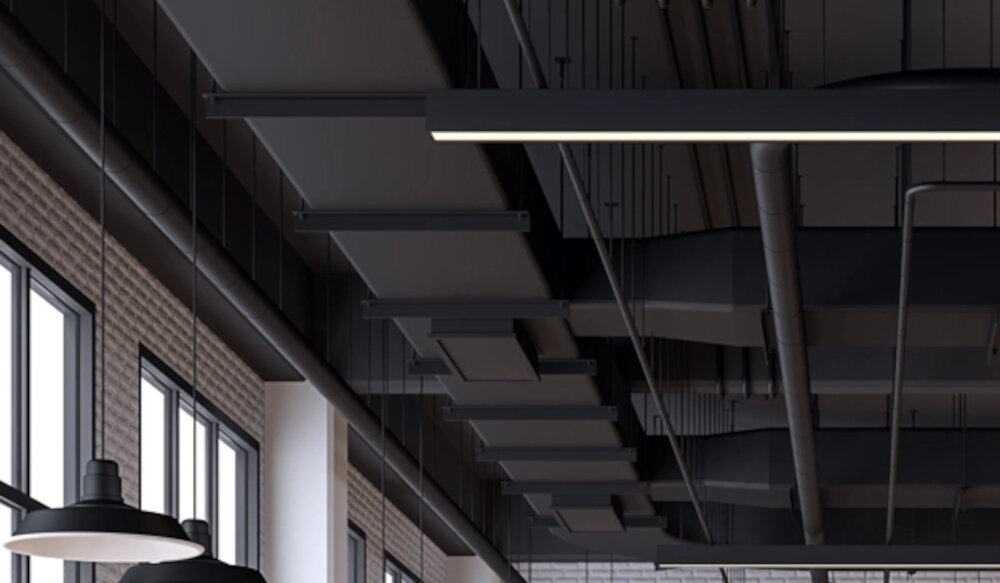
LED light strips are a great way to add a touch of ambiance to any space. Installing and controlling them is a straightforward process that anyone can do with the right tools and know-how. First, start by measuring the length of the space where you want to install the LED light strips. This will help you determine how much strip lighting you will need to purchase. Once you have the strips, you will need to clean the surface where you plan to install them thoroughly. This will help the adhesive stick better to the surface. Next, you will need to cut the LED light strips to the desired length. Most LED light strips come with cut marks every few inches, making it easy to cut them to the exact length you need. Once you have cut the strips, you can begin to install them. Peel off the adhesive backing and carefully apply the LED light strips to the surface. Be sure to press down firmly to ensure that the strips stick properly. Finally, connect the LED light strips to a power source and enjoy the beautiful ambiance they create. Controlling LED light strips is just as easy as installing them. Most LED light strips come with a remote control that allows you to change the color, brightness, and even the mode of the lights. Some LED light strips can also be controlled using a smartphone app, allowing you to adjust the lighting from anywhere in the room. With the right LED light strips, you can transform any space into a beautiful and inviting environment that is perfect for relaxing, entertaining, or working. So, don’t be afraid to experiment with different colors and lighting modes to find the perfect setting for your needs.
Installing LED light strips is a great way to add a modern touch and ambiance to any space. To begin, measure the area where the strips will be placed and purchase the appropriate length of lights. Next, clean the surface where the strips will be applied and use adhesive tape to secure them in place. Be sure to connect the strips to a power source and control system, such as a remote or smartphone app, for easy use. It’s important to also follow manufacturer instructions for proper installation and maintenance. With these simple steps, you can effortlessly transform any room with the stunning glow of LED light strips.
LED light strips are versatile and can be controlled in several ways. One of the most common methods is through a remote control, which allows users to switch between different lighting modes, adjust brightness, and change colors. Some LED light strips can also be controlled through a mobile app, which offers more customization options and allows users to set schedules and timers. Voice control is another popular method, where users can control their LED light strips using voice assistants like Alexa or Google Assistant. Lastly, some LED light strips can be controlled through a physical switch, which is ideal for those who prefer a more traditional method of control. With these various options, users can customize their LED light strips to match their preferences and create unique lighting experiences.
When installing LED light strips, it is important to follow best practices to ensure optimal performance and safety. First, make sure that the power source you are using is compatible with the LED light strip, and that the voltage and wattage are appropriate. Next, clean the surface where the light strip will be installed to ensure a secure and stable attachment. It’s also recommended to use mounting clips or adhesive tape to secure the light strip in place. When controlling the LED light strip, it’s best to use a dimmer switch or a smart home automation system to adjust the brightness and color temperature. It’s important to avoid overloading the circuit or leaving the lights on for extended periods of time, as this can cause damage to the LED light strip and increase the risk of fire. By following these best practices, you can enjoy the benefits of LED light strips in your home or business while ensuring safety and longevity.
In conclusion, LED light strips are a versatile and energy-efficient lighting solution that can transform any space. They work by using a semiconductor material to convert electricity into light, and their flexibility and ease of installation make them ideal for a variety of applications. With a wide range of colors and brightness levels available, LED light strips allow for creative expression and can enhance the ambiance of any room. Additionally, they have a longer lifespan than traditional incandescent bulbs and are more environmentally friendly, making them a sustainable choice for lighting. Overall, understanding how LED light strips work and their benefits can help you make informed decisions when choosing lighting for your home or business.
LED light strips are a popular choice for home and commercial lighting due to their versatility and energy efficiency. By using LED technology, these strips consume less energy and last longer than traditional lighting options. They also emit less heat, making them a safer option. LED light strips are available in a variety of colors and can be easily installed in any space, providing a unique and customizable lighting experience. They can be used to highlight architectural features, create mood lighting, or provide functional task lighting. Overall, LED light strips are a cost-effective and eco-friendly option that can transform any space.
In conclusion, LED light strips have become a popular choice for people looking to add some flair and excitement to their living spaces. These strips are easy to install and come in a variety of colors and sizes, making them a versatile option for any room. They can be used to highlight artwork, create a cozy atmosphere, or even be synced with music for a party vibe. When choosing LED light strips, it’s important to consider the brightness, color accuracy, and durability. Additionally, it’s essential to purchase from a reputable brand to ensure high-quality materials and reliable performance. With the right LED light strips, you can transform your space into a personalized haven that reflects your style and personality.
Conclusion
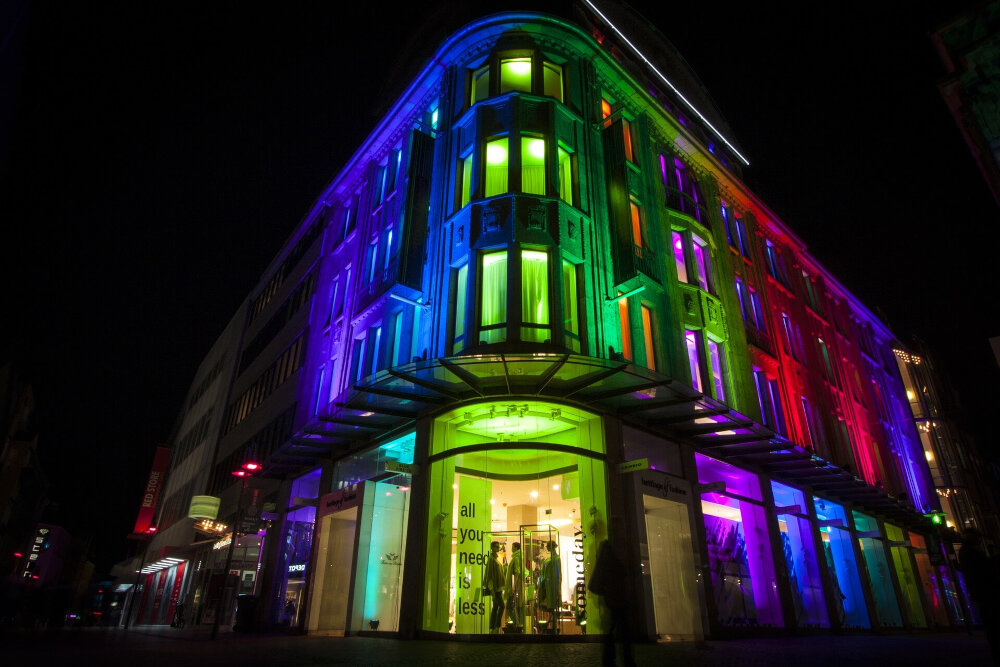
In conclusion, LED light strips have become an essential tool for transforming living spaces. By understanding how they work, we can customize our lighting experience to fit our unique styles and preferences. These strips offer an array of benefits, from energy efficiency to versatility in design. Whether you’re looking to create a romantic ambiance or add some pizzazz to your home, LED light strips are the perfect solution. So, let’s embrace the power of LED technology and illuminate our lives with colorful, vibrant lighting.

